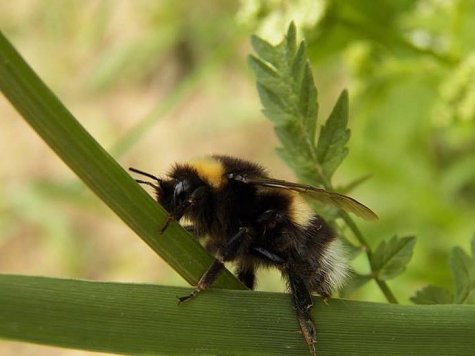Cool weather suits bumblebees
Text Reet Karise and Marika Mänd
Photo Fabien Cremona
Translation: Liis
The importance of bumblebees becomes clear precisely in cool and changeable weather such as we have had for the last week. But how do bumblebees manage to go out foraging in such chilly weather?
While insects generally are cold blooded (or poikilothermic), meaning that their body temperature depends directly on the outside temperature, then bumblebees as an exception are considered to be semi-warmblooded (heterotherms). Bumblebees are capable of producing heat energy from their internal muscles. This ability they also use to accelerate the development of the brood. In early spring the queen lies on the brood mound or cell and warms the larvae. Thus she manages to accelerate the development of the larvae significantly.
Bumblebees differ from other bee-like insects by their comparatively large and stumpy body that is densely covered with hairs. The larger body and dense fur allows them to preserve heat better and go foraging in cool weather when other bees must stay in the nest, even with some degrees of cold (for instance bumblebees living in the tundra).
Join the „Meie kimalased – Our bumblebees” group on facebook: LINK
and share your pictures of the bumblebees in your garden with other enthusiasts!









